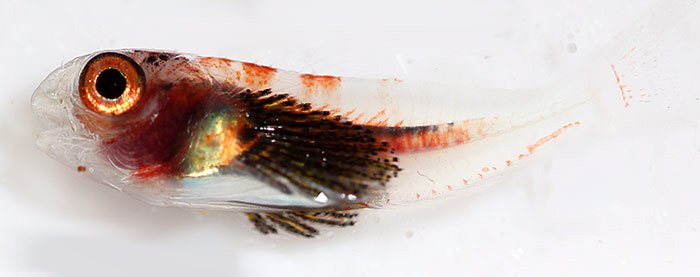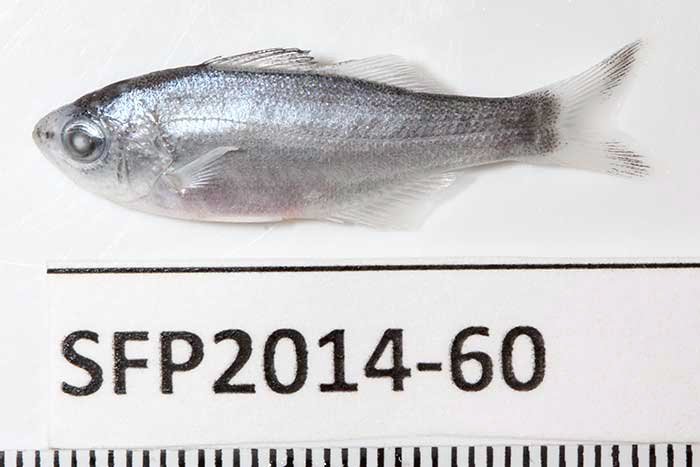A light in the night? What’s nightlighting?
Steve and Sally examining Anna's nightlighting catch.

Nightlighting - examining the catch Photographer: Mark McGrouther © Australian Museum
Image: Mark McGrouther© Australian Museum
Picture this … you are on the deck of a rocking boat at night. You have a long-handled pool cleaning net in your hand, it’s dark (and are wearing sunglasses if you are a Blues Brothers fan). So how do you use that pool net to catch fishes? The answer… hang a really bright light over the side and start scooping.
Nightlighting works best when the boat is positioned over deep water on a very dark night. The light attracts plankton which in turn attracts fishes. Larger fishes are sometimes attracted by the small fishes… anyway, you get the idea. Sometimes the results can be spectacular. I’ve been fortunate to have seen a seething silver school of tightly packed baitfish just below the surface. We didn’t have that experience during the Southern French Polynesia expedition but using this technique we did manage to catch a number of interesting fishes.

Stanulus larva Photographer: Mark McGrouther © Australian Museum
Image: Mark McGrouther© Australian Museum
Anna Berthelsen, our nightlighting champion, put in hours at the end of the net and made some interesting catches. The little fish in the top images to the right is a larval blenny, probably a species of Stanulus. It was collected at Morane Atoll. The silver fish is a Reticulated Flagtail, Kuhlia sandvicensis collected at the same location. The blenny grows to be a small bottom-dwelling species, the Flagtail however is a schooling species. Despite the differences in the habitats of the adults the larvae of both species are pelagic as are most fish larvae.

Reticulated Flagtail, Kuhlia sandvicensis Photographer: Mark McGrouther © Australian Museum
Image: Mark McGrouther© Australian Museum
Another specimen, also collected by Anna, was a garfish or halfbeak. This was the only representative of this family collected during the trip and shows the value of nightlighting. The specimens are still on their way back to the museum so we can’t confirm the species identifications just yet.
So now you know what to do if you ever find yourself on a boat at night holding a pool net (sunglasses are optional).








